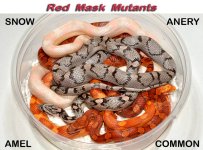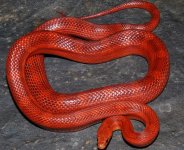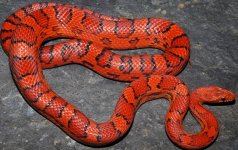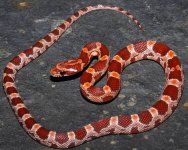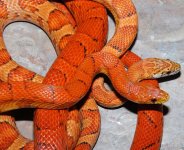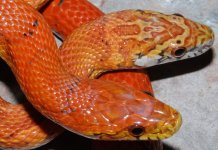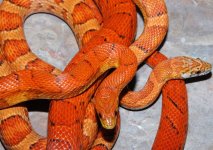What NiklasTyreso probably meant is that a parent carrying only one redcoat/red factor gene could be considered "het". If it is dominant, that "het" form would show the trait, but will pass it on to only 50% of the offspring when paired with a non-redcoat/red factor snake. You can still have a homozygous redcoat/red factor snake which shows the trait and all of it's offspring, when paired with a non-redcoat/red factor snake, would show the trait, but "only" be "hets". If this is the case, it might explain a variance in phenotype if the homozygous redcoat/red factor snakes are even much more red in phenotype than one that is only 'het", ie: a "super" form. And it might be more difficult to actually identify some of the "het" redcoat/red factor offspring from some of the normal ones considering normal varience in phenotype (from a breeding of 2 phenotypic redcoat/red factor snakes where both are "hets" resulting in "super"/homozygous offspring, "het" redcoat/red factor offspring, and normal offspring).
 I would luv to get some of this into my lava het terrezzo and ultra/ultrmel bloodred pairs
I would luv to get some of this into my lava het terrezzo and ultra/ultrmel bloodred pairs  I think I will be buggin you next spring Bob
I think I will be buggin you next spring Bob 

